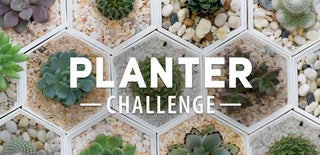Introduction: Heritage Planter : Self Watering , Low Poly Planter With Landscaped Lid
There is a Chinese saying :
Give a man a fish and you feed him for a day,teach him to fish and you feed him for a lifetime.
Today we will learn how to create a low poly planter. No more pseudo tutorials with imported solids into softwares like meshmixer to do the dirty work for you and have no control. This tutorial will be a bit lengthy but is worth learning.
The software we will use are :
- Autodesk Inventor (to do majority of solid modelling) - freely available
- Autodesk Fusion 360 (to do all mesh work because inventor kind of sucks at meshes) - freely available
- Blender (to load terrain data into cad models) - freely available
We shall model the planter in two parts :
- The planter
- The lid
Now a bit of history as to why I name this a HERITAGE planter. I was forced to move out of my home when I was four because of the ethnic cleansing that happened in Kashmir, India in the 1980's. One of the memories that I have from that time is of a famous lake called 'Dal lake' . This planter was designed to represent exactly that - my memory, my heritage to remind me where I came from.
Now you can learn the techniques here and apply to create your own unique planter with your memory. It could be your house, your city etc.
If you like this instructable, please do vote for me as I have entered this into the planters challenge. If I win , I would have a chance to 3d print my design and further refine it. I plan to create a V2 with automated watering system using arduino. Your vote would really motivate me.
Step 1: Modelling the Planter Cross Section
Step 2: Generating the Upper Half Planter Surface
Step 3: Generating the Lower Half Planter Surface
Step 4: Modelling the Bottom Plate
Step 5: Bridging the Gaps
Step 6: Bridging the Gaps Contd.
Step 7: Modelling the Bottom Plate V2
Step 8: Reinforcing the Center Groove
Step 9: Leveling the Top Rim
Step 10: Drainage Hole and Exporting Lid Profile
Step 11: Downloading Terrain Data
Step 12: Converting Terrain Data to a 3d Model
Step 13: Modelling the Planter Lid
Step 14: Modelling Cutouts in the Lid for the Lake and the Plants
Step 15: Modelling the Water Reservoir Inside the Planter
Step 16: STL Files
Attached are the stl files

Participated in the
Planter Challenge

















